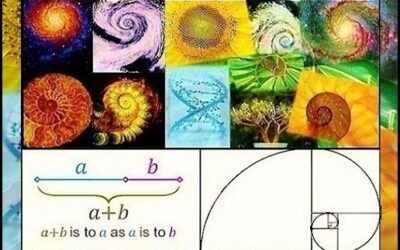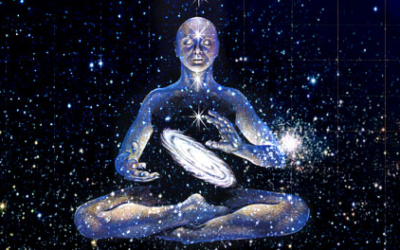By Chris Lee | Published 7 months ago
Tracking photons through the classic double-slit experiment
This week, an exciting new experiment has been published in Science. Funnily enough, it repeats an experiment that is over 200 years old, and I am not certain that it teaches us anything new about the world. But it puts the weirdness of quantum mechanics on display for all to see. And it allows me to get sidetracked by history and generally ignore the work in question except in passing.
A bit of history
In 1803, Thomas Young published a paper on an experiment that has not just become famous, but is, in fact, the workhorse paper of quantum mechanics. In his experiment, light was passed through two closely spaced and narrow slits. Some distance after the slits, the light hit a screen so that the resulting intensity pattern could be observed.
Instead of two fuzzy stripes, a banded pattern was observed, one that could only be explained by assuming that light had a wave nature. With light assumed to be a wave, the waves’ amplitudes could sum to provide dark bands and light bands. This publication was the final salvo in the battle between physicists who believed that light was a particle and physicists who believed that light was a wave. Shortly after the publication of Young’s paper, the “wave physicists” accepted the surrender of the “particle physicists” at a secret ceremony at Cambridge, where the losing side handed over their tables of integrals and agreed never to use calculus again.
And there the story might have ended. In fact, for many such stories in physics, it does end there. But in 1924, a young physicist called de Broglie published the results of his work on the emerging theory of quantum mechanics. In his work, he posited that all particles had a wave-like nature—and, conversely, every wave has some particle-like properties. This was a revelation, and what better way to test it than with versions of Young’s double slit experiment?
Since then, physicists have used double-slit-style experiments to observe the wave-like properties of electrons, neutrons, whole atoms, and entire conglomerates of atoms in the form of Bose Einstein condensates. Clearly, matter has both particle-like and wave-like properties. De Broglie did not celebrate—instead he gave up on quantum mechanics as we know it today in disgust. Why?
The main reason boils down to this: the interference pattern can be built up from photons that are sent through the slits one at a time. They have no chance of interfering with each other, so the only way for the pattern to build up is for each photon to interfere with itself. And the only way for that to occur is if the photon somehow passes through both slits at the same time.
Once you add in a few other considerations, like when and how an experimenter chooses to make a measurement, you are left with an unsettling degree of non-locality and a sort of spooky instantaneous propagation of the wavefunction. It was enough to make a small group of physicists turn in their slide-rules and resign themselves to watching from the sidelines.
Back to the present experiment
The current experiment can be described as a physicist hearing that the photon went through both slits, agreeing, but then saying, “No, seriously, which slit did the photon go through?” Yes, there remains a visceral and fundamental discomfort with the realities of quantum mechanics. Nevertheless, this discomfort has led to a very clever experiment that comes as close as is possible to answering this question.
Any experiment that tells you with certainty which slit the photon passed through will not allow an interference pattern to build up. Even if the experiment doesn’t absorb the photon, it modifies its properties enough that it cannot interfere with itself; because we know that it went through just one of the slits, it shouldn’t interfere with itself. But what if we made a probabilistic measurement? One that just said something along the lines of “this photon went through the left slit with 75 percent probability.”
To do this, the researchers constructed a double slit experiment, but instead of placing a screen after it, they placed a crystal that has a different refractive index depending on how the light is polarized. Depending on the angle with which the photon passes through the crystal, its polarization gets a small rotation. After that, an optical element tries to set the polarization to a particular state, and, depending on where the photon originated from, will fail to a greater or lesser extent. Following that, the photon is deflected at some angle that depends on its polarization, allowing a simultaneous measurement of part of the photon’s momentum and where it hits on a screen (which is governed by the interference pattern).
Because all of these measurements are probabilistic, you never know which photon came from where, but over time you can build statistics that tell you where photons are most likely to be found. If you do this repeatedly, with the second half of the detection apparatus moved closer to and further away from the slits, you can build up photon trajectories.
It’s important to realize that these are not the trajectories of individual photons—instead they are more like probability clouds that tell you where photons are most likely to be found. And what do you know? Half the photons appear to have gone through one slit and half go through the other.
But, in fact, this is a lie. That photon still has to have gone through both slits. It is important to realize that a measurement has to produce a result. It is always going to find that the photon is somewhere, and that tells us very little about where it came from or where it is going to.
With that knowledge, it is hard to say what this experiment tells us that we didn’t know before. The only difference is that now we have both data and theory saying the same thing, which is important. But, there was so much data from so many different experiments that would have had to have been wrong for this experiment to turn up any other result that it is hard to be surprised.
That said, this demonstrates another aspect of control. These weak measurements only give partial information and are limited to statistical inferences. But they also result in measurements that cannot otherwise be made, making them an important new tool in the development of quantum apparatus.
http://arstechnica.com/science/news/2011/06/an-experiment-that-just-keeps-on-giving.ars



